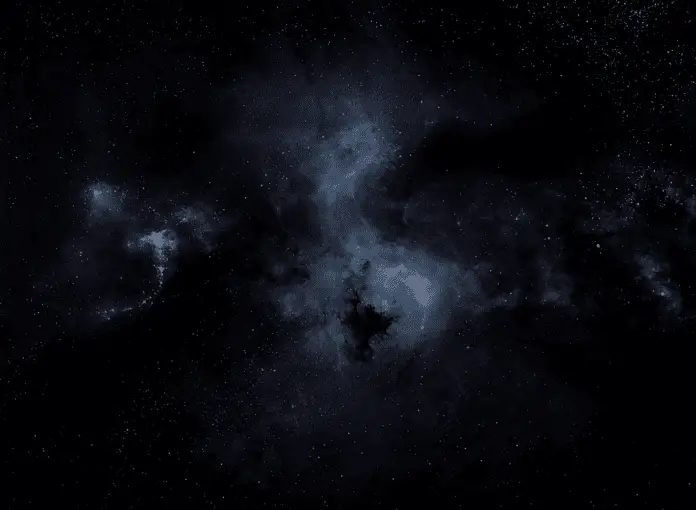Martin Luther King Jr. rightly said “Darkness cannot drive out darkness: only light can do that.”
What is the color of darkness, anyway? Black. What does it look like? Deep, scary, void. Speaking of darkness, it is well related to space. The space is as deep, scary, and void as what comes to our minds when we think of a never-ending abyss of darkness.

A night sky has a million stars, and on a sunny summer morning, it looks brightly lit even though we can’t see any stars (except the sun, of course).
But why is there so much light on Earth but not in space? After all, the brightest light source is out there in space, right? Believe me; you are not the only one who wonders about it.
It’s because of the massive cozy blanket covering Earth, the atmosphere. Our atmosphere has dust particles and molecules that reflect sunlight giving us various bands of light.
On the other hand, if you were on the moon, you could see the stars in the dark sky while the sun is still blazing its full heat on you. That’s because there’s no atmosphere on the moon.
Space is not empty, and in such a way, the sun is not the only star in space. So why does it look dark? Shouldn’t it be brightly beaming?
Why Does Space Look Dark?

The night sky may be filled with a million stars. But there still are unexplainable black patches between them. And if there’s so much light source to light up the whole sky, why does it still look dark?
This can be explained with the “Dark Night Sky Paradox”.
The paradox states that if the Universe was infinite, static, and eternal, there should be a star or galaxy in any direction we look from the Earth. So basically, the whole sky is filled with stars, and space is insanely illuminated.
But thanks to Hubble, he solved the mystery by observing the movement of objects in space. With the help of the redshift, he discovered that the Universe is expanding and the galaxies are receding away from each other.
This theory proved that the Universe is not static hence it has to be finite.
Maybe some stars are so far away that their light hasn’t reached us yet. So basically, when we look up at space, we are already looking into the past. With the age and time of space, we can only see the light that has had time to reach us.
Another reason we do not see most things in space is that those “most things” are probably invisible to the naked eye.
The visible light is just a part of the electromagnetic spectrum which constitutes radio waves, microwaves, infrared, UV rays, X-rays, and Gamma Rays. Modern-day telescopes pick up these signals and tune the picture according to the frequency, which is far beyond possible for the naked eye.
So who is to blame for everything that’s there in space but not visible to us?
Anyway.
Detection Of Unexplained Light Source

Yes. Space is way more than what it looks like. And it’s not totally empty or dark. But who can explain this unexplainable light source that astronomers detected?
This happened when NASA designed a spacecraft, the New Horizons, to explore planet Pluto, its moon, and the Kuiper Belt. Apparently, this spacecraft kept going further deep into space even after its mission at Pluto.
Astronomer Lauer and a team of researchers at the National Optical Astronomy Observatory in Arizona have been using the information sent by this spacecraft to study the deepness and darkness of space.
The craft is now nearly 4 billion miles away from Earth, and astronomers have been interpreting pictures and messages sent by this craft. This is when they found out about the light source coming from actually nowhere.
Even if it was considered coming from the sun, the spacecraft was too far away from the sun, and it seemed like there was much light outside of the galaxies as there was inside. Even the closest star, the Proxima Centauri, is about four light-years away from our solar system.
Researchers tried to uncover the mystery by subtracting the light from known sources and some from the stars and galaxies, which should have left the image pitch black. They did get images without any possibly visible source of light. But there still seemed to be too much light than predicted which left them baffled.
So, where is this light coming from? Well, if a question related to the universe starts with a ‘where’ or a ‘what,’ the only answer one can give is – we’ll never know.
The scientists suspect that this source of light could come from undiscovered things in the universe or the light that is yet to reach us completely. Just another unsolvable element of the mighty universe that could possibly be unboxed with advanced technology in the future.
Anyway. You know what they say, tomorrow is a mystery, well so is the Universe.
